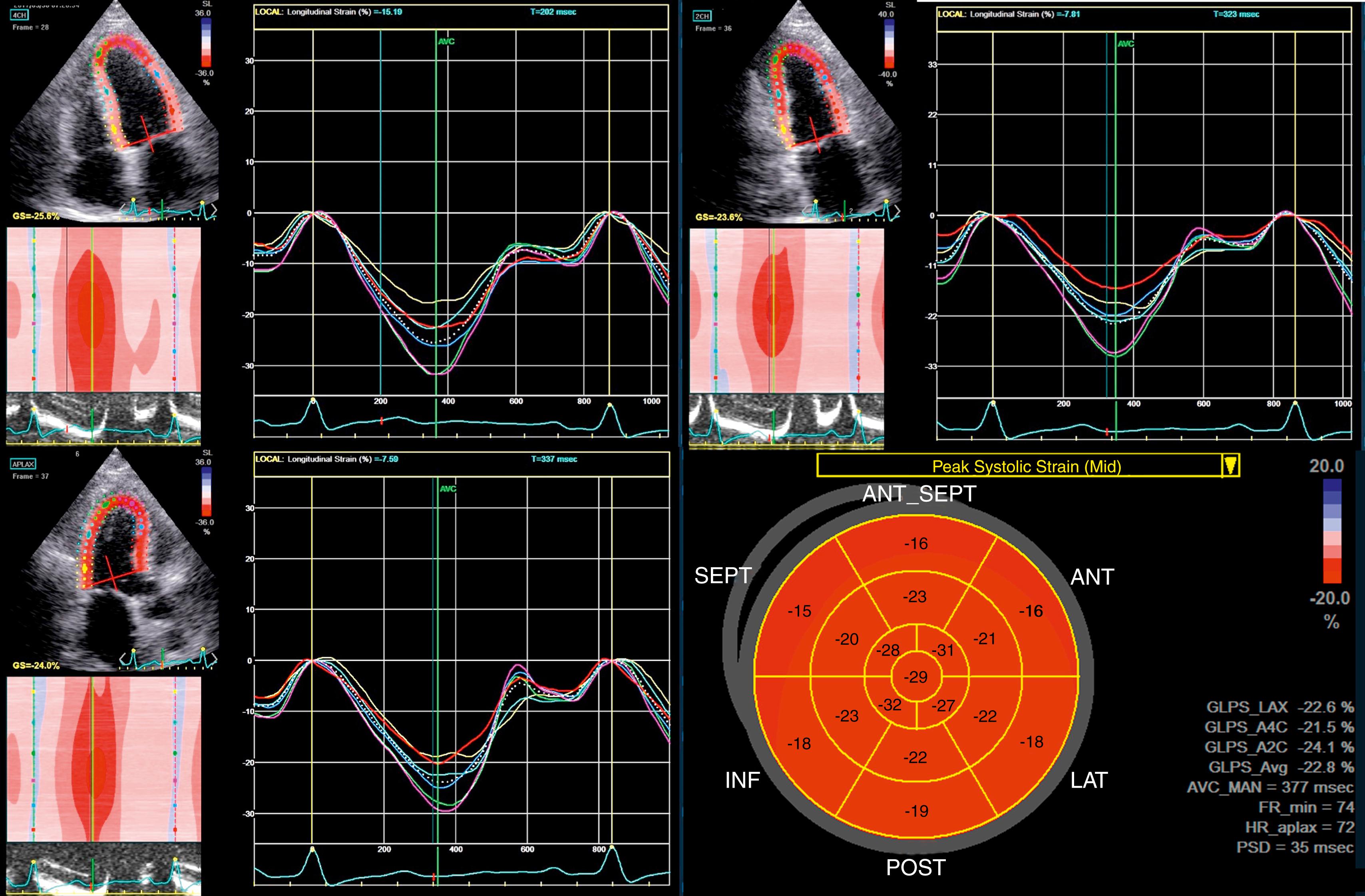Physical Address
304 North Cardinal St.
Dorchester Center, MA 02124
Dr. Gorcsan was supported, in part, by research grants from Medtronic, EBR Systems, GE Medical Systems, and V-Wave Ltd.
Myocardial strain measurement using speckle-tracking echocardiography (STE) has made major contributions to the care of patients with cardiac diseases. This chapter focuses on emerging applications specific to patients with valvular heart disease. Most of the recent studies on myocardial strain and valvular disease have been retrospective or registry data but have made important exciting observations that have potential to make a major impact on patient management. This chapter is limited to topics of the use of myocardial strain with the most common valve diseases, including mitral regurgitation (MR), aortic stenosis (AS), and aortic regurgitation (AR). Important new data demonstrating the prognostic value of global longitudinal strain (GLS) are discussed in patients with: asymptomatic severe MR, severe AS undergoing surgical valve replacement, asymptomatic severe AS, and asymptomatic severe AR. Combined, these data demonstrate that GLS is a powerful new diagnostic measure that can contribute to the care of patients with valvular heart disease.
The unique features that speckle tracking strain contributes to the evaluation of patients with valvular heart disease relates to valve effects on left ventricular (LV) mechanical function. Myocardial strain occurs in three dimensions, including vectors of longitudinal strain, circumferential strain, radial strain, and torsion. The measure most commonly represented currently to quantify LV function is the index of GLS. The standard approach of obtaining GLS is from the apical four-chamber, apical two-chamber, and apical long-axis views, combining the longitudinal shortening data from these three views into a single index ( Fig. 26.1 ). Other vectors of myocardial strain may have important clinical utility, but the focus of this chapter remains on GLS because of its widespread clinical adoption and relative simplicity. In this review, GLS is often reported in absolute values with higher GLS representing better LV function for ease of understanding.

LV volumes and ejection fraction (EF) are the well-established means to quantify LV function in patients with MR, AS, and AR. GLS has been shown to be additive to LVEF, in particular with associations with prognosis, and the implication that GLS may influence future clinical decision-making processes for surgical or percutaneous valve interventions. EF describes the blood displacement within the LV, whereas strain measures the deformation of the wall of the chamber. It is clear that measures of wall deformation of the chamber must relate to the blood displacement within the chamber; however, GLS and LVEF are not precisely correlated. It is believed that GLS is additive to LVEF because it includes wall properties that cannot be measured by LV volumes, including fibrosis, hypertrophy, and infiltration.
Myocardial fibrosis, including macroscopic fibrosis from ischemic disease and myocardial infarction and microscopic interstitial fibrosis, has been shown to have the potential to influence greatly values of strain. Myocyte hypertrophy, in which cells increase in width, resulting in LV hypertrophy, is another principal mechanism of disease that can affect GLS in a manner different than LVEF. The additive value of strain to LVEF has been shown with elegant computer simulations and in patients with heart failure and preserved ejection fraction. , Furthermore, infiltrative diseases, most commonly cardiac amyloidosis, have profound effects on LV wall properties, which can be measured by strain imaging in a manner different than LVEF.
Valvular heart disease may have important effects on ventricular function. For example, in patients with significant MR associated with LV unloading to the lower pressure left atrium (LA), the measure of LVEF may be misleadingly elevated. In other words, patients with MR and LVEF in the lower range of normal may actually have LV dysfunction that is masked by the effects of unloading. It should be stressed that GLS and other measures of strain are also load dependent and are subject to the same influences of load as LVEF. However, GLS appears additive to LVEF in valvular heart disease by likely including wall properties of fibrosis, hypertrophy, and infiltration (discussed earlier), which are not captured by LVEF. Accordingly, GLS may be less load dependent than LVEF in certain clinical scenarios, but GLS is not load independent.
Become a Clinical Tree membership for Full access and enjoy Unlimited articles
If you are a member. Log in here